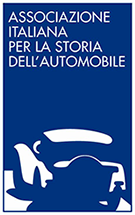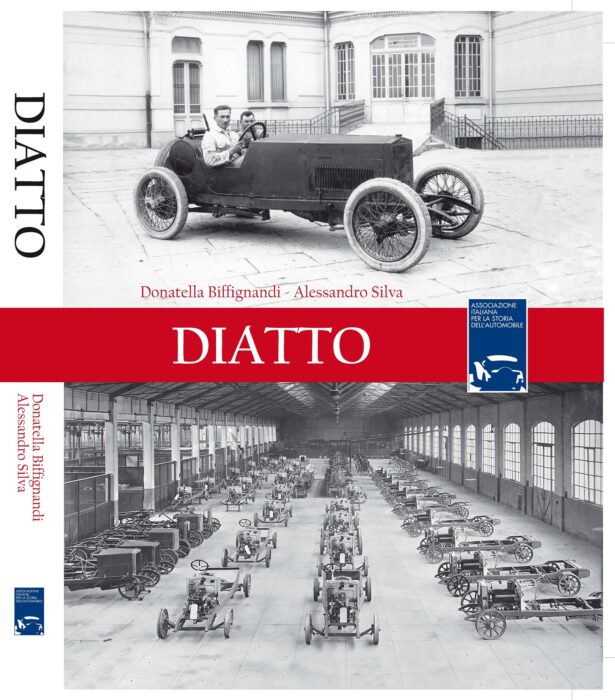Diatto
Il quinto libro della linea editoriale AISA è dedicato nuovamente ad una marca automobilistica torinese, la Diatto, attiva tra il 1905 e il 1930 circa, su cui finora si è scritto pochissimo, nonostante una storia quanto mai ricca e suggestiva di intrecci con alcune tra le più grandi personalità della storia dell’automobilismo europeo.
La Diatto Automobili nacque come filiazione di una realtà industriale che aveva preso avvio a Torino nel 1835, nel campo della meccanica pesante e in particolare della costruzione ferrotranviaria. Capostipite fu Guglielmo (1804-1864), di cui Pietro e Vittorio, i fondatori della Diatto-Clément nell’aprile 1905, erano i nipoti. Logico che la neonata azienda poté godere fin dagli esordi della lunga tradizione manifatturiera della casa madre.
Peraltro la famiglia dei Diatto, ampia ed articolata, costituì per circa ottant’anni una potenza industriale nel circondario torinese grazie ad un gran numero di partecipazioni societarie in aziende dei più svariati settori, con predilezione per il metallurgico. Con la cessione però della parte ferrotranviaria alla Fiat nel 1917, e con la morte via via degli esponenti più attivi, la famiglia si ritirò dagli affari, e la Diatto fu acquisita, a guerra ancora in corso, da altri gruppi industriali. Altrettanto interessante fu la storia successiva, in cui si intrecciarono rapporti finora mai indagati così approfonditamente tra la Diatto ed Ettore Bugatti per un motore d’aviazione, tra la Diatto e il progettista Giuseppe Coda (dalle cui mani uscì la splendida tipo 20), e infine tra la Diatto e i due ben noti progettisti-piloti Alfieri ed Ernesto Maserati, a cui si deve la realizzazione della Grand Prix ad otto cilindri del 1925.
311 pagine, oltre 350 illustrazioni d’epoca, moltissime inedite. Corposa la parte delle Appendici, comprendente le schede tecniche di ogni modello realizzato, le tabelle sportive con tutti i risultati di gara, l’elenco dei brevetti e dei macchinari, la storia degli stabilimenti, gli organigramma aziendali.
Autori sono Donatella Biffignandi e da Alessandro Silva, per la prima volta insieme. Hanno partecipato, con documenti, fotografie e testi, anche Giovanni Bossi e Alessandro Sannia.
Alessandro Sannia, insieme a Rosanna Bussano, ne hanno curato progetto grafico e impaginazione.
Per entrare a far parte dell’AISA è sufficiente compilare la domanda di iscrizione disponibile qui.
The fifth book in the AISA editorial line is again dedicated to a Turin-based automobile brand, Diatto, active between about 1905 and 1930, about which very little has been written so far, despite a history as rich and evocative as ever of intertwining with some of the greatest personalities in the history of European motoring.
Diatto Automobili was born as a subsidiary of an industrial reality that had started in Turin in 1835, in the field of heavy engineering and in particular of railway and tramway construction. The progenitor was Guglielmo (1804-1864), whose grandsons were Pietro and Vittorio, the founders of Diatto-Clément in April 1905. Logically, the fledgling company could enjoy from the very beginning the long manufacturing tradition of the parent-company.
Moreover, the Diatto family, large and articulate, constituted an industrial power in the Turin area for about eighty years thanks to a large number of corporate holdings in companies in a wide variety of sectors, with a predilection for metallurgy. With the sale, however, of the railroad part to Fiat in 1917, and with the gradual death of the most active members, the family withdrew from business, and Diatto was acquired, while the war was still in progress, by other industrial groups. Equally interesting was the subsequent history, in which hitherto never so thoroughly investigated relationships are interwoven between Diatto and Ettore Bugatti for an aviation engine, between Diatto and designer Giuseppe Coda (from whose hands the magnificent Type 20 emerged), and finally between Diatto and the two well-known designer-drivers Alfieri and Ernesto Maserati, to whom the realization of the eight-cylinder Grand Prix of 1925 is owed.
Complementing the historical narrative is a substantial set of appendices, including data sheets for each model made, tables with all race results, list of patents and machinery, history of the factories, and organizational charts.
311 pages, over 350 vintage illustrations, many previously unpublished.
The book was written by Donatella Biffignandi and Alessandro Silva, for the first time together.
Giovanni Bossi and Alessandro Sannia also contributed documents, photographs and texts.
Alessandro Sannia, together with Rosanna Bussano, edited the graphic design and layout.




